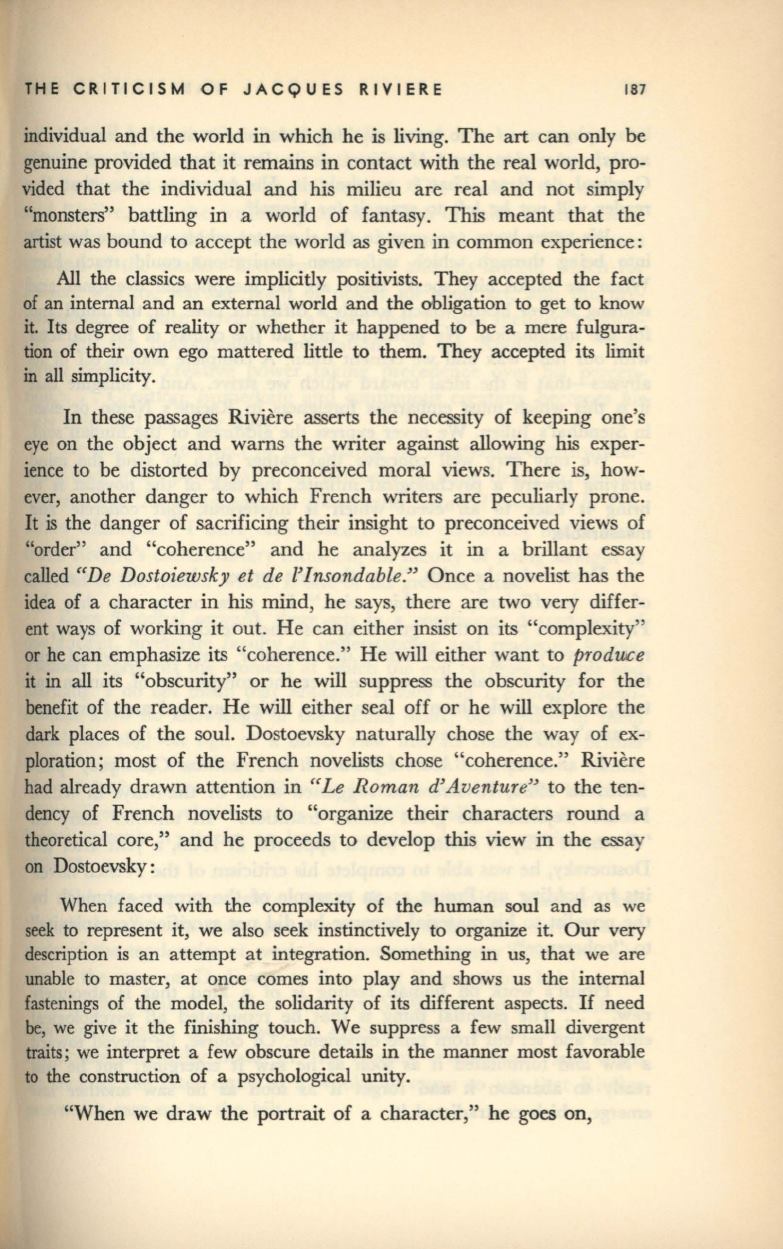
THE
CRITICISM OF JACQUES RIVIERE
187
individual and the world in which he is living. The art can only be
genuine provided that
it
remains in contact with the real world, pro–
vided that the individual and his milieu are real and not simply
"monsters" battling in a world of fantasy. This meant that the
artist was bound to accept the world as given in common experience:
AIl the classics were implicitly positivists. They accepted the fact
of an internal and an external world and the obligation to get to know
it. Its degree of reality or whether it happened to be a mere fulgura–
tion of their own ego mattered little to them. They accepted its limit
in
all simplicity.
In these passages Riviere asserts the necessity of keeping one's
eye on the object and warns the writer against allowing his exper–
ience to be distorted by preconceived moral views. There is, how–
ever, another danger to which French writers are peculiarly prone.
It is the danger of sacrificing their insight to preconceived views of
"order" and "coherence" and he analyzes it in a brillant essay
called
"De Dostoiewsky et de l'Insondable."
Once a novelist has the
idea of a character in his mind, he says, there are two very differ–
ent ways of working
it
out. He can either insist on its "complexity"
or he can emphasize its "coherence." He will either want to
prodUiCe
it
in
all its "obscurity" or he will suppress the obscurity for the
benefit of the reader. He will either seal off or he will explore the
dark places of the soul. Dostoevsky naturally chose the way of ex–
ploration; most of the French novelists chose "coherence." Riviere
had already drawn attention in
"Le Roman d'Aventure"
to the ten–
dency of French novelists to "org.anize their characters round a
theoretical core," and he proceeds to develop this view in the essay
on Dostoevsky:
When faced with the complexity of the human soul and as we
seek to represent it, we also seek instinctively to organize it. Our very
description is an attempt at integration. Something in us, that we are
unable to master, at once comes into play and shows us the internal
fastenings of the model, the solidarity of its different aspects.
If
need
be,
we give it the finishing touch. We suppress a few small divergent
traits; we interpret a few obscure details in the manner most favorable
to the construction of a psychological unity.
"When we draw the portrait of a character," he goes on,


